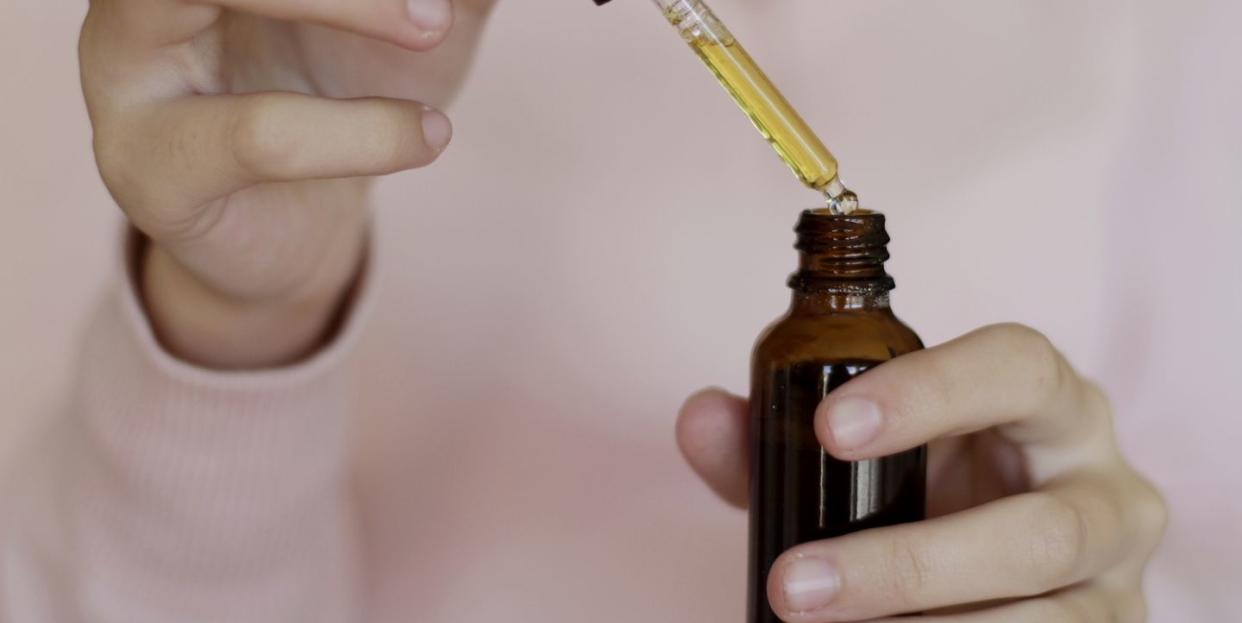Here's What Salicylic Acid Can Do For Your Skin

Salicylic acid is in desperate need of better PR. So many people think of it as a relic from their acne-prone teenage years—harsh, irritating, and destined to cause redness or flaking. In reality, the ingredient is a hardworking addition to any routine. I’m in my forties, with classic combination skin, and I regularly use salicylic acid products to clean out my pores, ward off breakouts, and brighten and tone. Plus, it can help you get rid of whiteheads and blackheads. And I think I look pretty good—39, at least.

To clear up some of the confusion, I talked to the experts—two dermatologists and a product formulator—to get the final word on what salicylic acid, how it benefits your skin, and how to choose the right product.
So what is salicylic acid, exactly?
Put on your lab coat for a sec, because we’re about to get a little science-y: Salicylic acid is a beta hydroxy acid that can be naturally derived from willow bark or cooked up in a laboratory by scientists. “It’s lipophilic, which means it’s absorbed by and dissolved into fats,” says Austin, Texas-based dermatologist Ted Lain, MD, chief medical officer of Sanova Dermatology. “The natural oil secreted by the hair follicles all over your body, called sebum, contains a lot of fat, so salicylic acid is able to penetrate deeper into pores than alpha hydroxy acids like glycolic or lactic acid.”
You’ll typically find the ingredient in beauty products in varying concentrations up to 2%, notes cosmetic chemist Ron Robinson, founder of Beauty Stat. Certain OTC medications (more on that below) can contain up to 40% and dermatologists sometimes administer salicylic acid peels with up to 30% of the ingredient in there.
What are the benefits?
It’s best-known use is as a treatment for superficial acne (mild cases of whiteheads and blackheads) on the face and the body. As a keratolytic, salicylic acid helps to slough away the dead skin cells that may be clogging your pores, Lain explains. Its ability to exfoliate may also explain why the ingredient can be an effective treatment for other skin conditions like keratosis pilaris (those tiny, annoying dry bumps on the backs of your arms) and, in the higher concentrations mentioned above, warts (Compound W, for example, is 17% salicylic acid).
But there are also some truly cool cosmetic benefits that can’t be ignored—think more even skin tone, a brighter complexion, and less noticeable pores. Not too shabby, eh? “Salicylic acid is really effective at flushing out the dirt and debris that can cause pores to dilate and become more visible,” adds Shari Marchbein, MD., assistant clinical professor of dermatology at New York University School of Medicine. The ingredient also gently removes the top layer of dead skin cells that can cause you to look tired and dull.
Another bonus: It can help whisk away the flakes associated with dandruff, though it’s typically paired with other ingredients that kill the yeast responsible for the condition. “I wouldn’t recommend salicylic acid alone as a treatment for dandruff,” advises Robinson, “but it’s a great tool if combined with other things like zinc pyrithione.”
Okay, great. But, can anyone use salicylic acid?
Though some irritation can occur, Robinson is confident that most over-the-counter products are well-tolerated and can be used daily (but just once-a-day, please). And he’s quick to point out the obvious: When all is said and done, a product is only effective as a consistent part of your skincare regimen. “Add it to your routine in a form you’re going to be religious about using.” Cleanser, spot treatment, all-over moisturizer—take your pick.
But if you have very sensitive skin and want to be extra careful, Lain recommends trying a face wash, which may help minimize any potential side effects. “Using a rinse-off product means you’re able to limit exposure to the skin,” he explains. “You don’t have to worry about it sitting on the skin in between oil-producing hair follicles, where it can cause irritation.” He also recommends starting with a product containing 0.5% or 1% salicylic acid, seeing how your skin reacts, and gradually working your way up to a formula with a larger concentration.
Here's the final word.
While all of our experts agree that salicylic acid can effectively treat mild acne on its own, more severe and cystic acne requires an assist from other ingredients you may be familiar with, such as benzoyl peroxide and topical retinoids like adapalene. “Very few people walk out of my office with one thing to treat their breakouts,” Marchbein says. “For those with more moderate acne, a good over-the-counter routine is a salicylic acid wash and a benzoyl peroxide or adapalene leave-on at night.”
Another key takeaway: Moisturize, moisturize, moisturize. It may be a hard bit of advice for acne sufferers, in particular, to swallow: You may ask, “Won’t creams make my breakouts worse?" It's possible, depending on the type of moisturizer you choose. So reach for a lightweight, oil-free hydrator. Marchbein says this will help you to successfully integrate salicylic acid into your routine. “If you’re not using moisturizer, your skin may not be able to tolerate these products,” she says. “You’ll end up stopping the routine, and you won’t see any results.”
Now that you have the know-how, you’ll need some products. Below are a few of my favorite salicylic acid picks, keeping our experts’ advice in mind.
For more stories like this, sign up for our newsletter!

